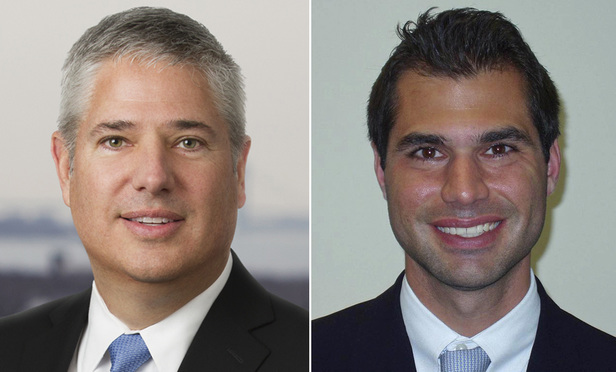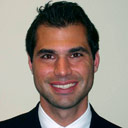Brian P Heermance

July 10, 2017 | New York Law Journal
Understanding New York's Economic Loss RuleBrian P. Heermance and Christopher P. Keenoy write: New York's Economic Loss Rule is purportedly a simple common law principle. However, its evolution and application have proven to be quite the opposite. A clear understanding of this rule is essential as it can significantly minimize exposure in many cases and in some instances result in the complete dismissal of a claim.
By Brian P. Heermance and Christopher P. Keenoy
25 minute read

October 02, 2015 | New York Law Journal
Legal Malpractice—Analysis and DefenseBrian P. Heermance and Christopher P. Keenoy write: Litigating a legal malpractice case is generally more complex than a simple tort action but, at its core, is governed by many of the same principles. The starting point is to simply examine the elements of any negligence claim—duty, breach, causation, and damages.
By Brian P. Heermance and Christopher P. Keenoy
9 minute read

October 01, 2015 | New York Law Journal
Legal Malpractice—Analysis and DefenseBrian P. Heermance and Christopher P. Keenoy write: Litigating a legal malpractice case is generally more complex than a simple tort action but, at its core, is governed by many of the same principles. The starting point is to simply examine the elements of any negligence claim—duty, breach, causation, and damages.
By Brian P. Heermance and Christopher P. Keenoy
9 minute read

May 14, 2014 | New York Law Journal
A Review of Tree-Related Hazard LiabilityBrian P. Heermance and Nicole M. Witteck discuss liability for accidents caused by sidewalk tree wells and sidewalks damaged by growing tree roots, both in and out of New York City; and by falling trees and limbs.
By Brian P. Heermance and Nicole M. Witteck
13 minute read

February 14, 2012 | New York Law Journal
Common Theories of Recovery in Dental Malpractice ClaimsBrian P. Heermance and Shanna R. Torgerson of Morrison Mahoney discuss the types of claims commonly faced by the eight types of dental specialists along with cases where plaintiffs alleged defendants deviated from the standard of care or failed to obtain informed consent prior to a procedure.
By Brian P. Heermance and Shanna R. Torgerson
7 minute read

September 26, 2012 | New York Law Journal
Firefighter's Rule a Strong, But Not Airtight, Defense for MunicipalitiesBrian P. Heermance, a partner at Morrison Mahoney, and Jamie K. McAleavey, an associate at the firm, write that in New York, police officers and firefighters injured in the line of duty have two potential causes of action: common law negligence and a statutory cause of action pursuant to General Municipal Law, Section 205-a, for firefighters and General Municipal Law, Section 205-e, for police officers.
By Brian P. Heermance and Jamie K. McAleavey
11 minute read

June 06, 2012 | New York Law Journal
Summary of New York Law Regarding Young DriversBrian P. Heermance, a partner at Morrison Mahoney, and Brian L. Battisti, an associate at the firm, examine the types of licenses for new drivers, the requirements and restrictions of each, and how license restrictions are enforced throughout New York State.
By Brian P. Heermance and Brian L. Battisti
9 minute read

September 26, 2013 | New York Law Journal
Emotional Distress and the 'Zone-of-Danger' RuleBrian P. Heermance, a partner at Morrison Mahoney, and Christopher P. Keenoy, an associate with the firm, discuss the zone-of-danger rule, which allows a person who is threatened with bodily harm resulting from a defendant's negligence to recover for emotional distress from viewing the death or serious injury of his immediate family.
By Brian P. Heermance and Christopher P. Keenoy
9 minute read

December 17, 2012 | New York Law Journal
New York's Recreational Use Statute and Legislative ProposalsBrian P. Heermance, a partner at Morrison Mahoney, and Christopher P. Keenoy, an associate at the firm, write: What do hunting, fishing, canoeing, hiking, cross-country skiing, sledding, and snowmobiling have in common? They are all activities that are covered by New York's Recreational Use Statute, which was enacted to induce property owners who may be reluctant to permit people to come onto their property for recreational activities to do so without fear of liability.
By Brian P. Heermance and Christopher P. Keenoy
9 minute read

May 05, 2006 | New York Law Journal
New York Spousal Privilege: A ReviewBrian P. Heermance, a partner at Morrison Mahoney LLP, and Anna Aroniadis, an associate at the firm, write that while the spousal and marital privileges may be powerful tools in excluding evidence at deposition and trial, the privileges must be asserted properly or courts will consider them inapplicable.
By Brian P. Heermance and Anna Aroniadis
5 minute read
Trending Stories
- 1South Florida Attorney Charged With Aggravated Battery After Incident in Prime Rib Line
- 2'A Death Sentence for TikTok'?: Litigators and Experts Weigh Impact of Potential Ban on Creators and Data Privacy
- 3Bribery Case Against Former Lt. Gov. Brian Benjamin Is Dropped
- 4‘Extremely Disturbing’: AI Firms Face Class Action by ‘Taskers’ Exposed to Traumatic Content
- 5State Appeals Court Revives BraunHagey Lawsuit Alleging $4.2M Unlawful Wire to China



